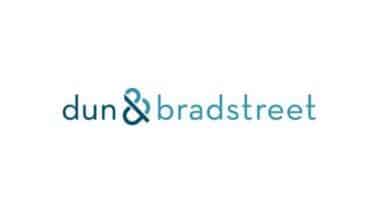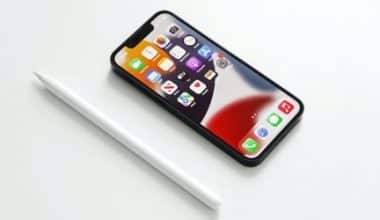Consumer products are the end results of product manufacturing. They can range anywhere from unsought products such as cars to the everyday products we use like beverages, pencils, etc. Let’s learn more about consumer products and how to test them for market prelaunch in this article. We’ll also see the role of the US commission in ensuring consumer products safety.
What Are Consumer Products?
Consumer products, also known as final goods, are items purchased for personal use by individuals or households. In other words, consumer products are goods purchased by the average consumer for consumption. Consumer products are classified into four types, each with its own set of marketing considerations.
Types of Consumer Products
#1. Convenience products
Consumers most frequently purchase convenience products. They are purchased without much thought or comparison to other options. Convenience products are typically low-priced, undifferentiated from other products, and placed in easily accessible locations. The products are widely distributed, require extensive promotion, and are strategically placed.
Convenience products include sugar, laundry detergent, pencils, pens, and paper.
#2. Shopping Products
Consumers purchase shopping products less frequently. Consumers typically compare shopping product attributes such as quality, price, and style to other products. As a result, shopping products are more carefully compared against one another, and consumers spend significantly more time comparing alternatives to convenience products. Shopping products require personal selling and advertising, are sold in fewer outlets (compared to convenience products), and are distributed selectively.
Shopping products include airline tickets, furniture, electronics, clothing, and phones.
#3. Specialty products
Specialty products have distinct characteristics or brand identification. Consumers of such products are willing to go out of their way to purchase specialty items. Specialty products are typically expensive, and buyers do not spend much time comparing them to other products. Rather, buyers put in more effort when purchasing specialty products than other types of products.
As an example, consider a Ferrari (a specialty product). A Ferrari buyer would have to put in a lot of effort to find the car. Specialty products necessitate targeted promotions and exclusive distribution; they can only be found in a few places.
Specialty products include sports cars, designer clothing, exotic perfumes, luxury watches, and famous paintings.
#4. Unsought Products
Unsought products are those that consumers do not normally purchase or would not consider purchasing under normal circumstances. They are typically not considered by consumers until they are required. The cost of unsought goods varies. Unwanted products necessitate aggressive advertising and personal selling because they are not commonly thought of by consumers.
Unsought products include diamond rings, pre-planned funeral services, and life insurance.
What Are The Features Of Consumer Goods?
- Each product has a number of perfect or close substitutes.
- There will be variations in the price of the various substitutes available.
- The buyers are found everywhere.
- Most of the consumer goods have elasticity in demand. When the price of one brand of soap goes up, the demand for it may fall and the buyer may shift to a substitute.
- The quantity purchased each time is less.
- The unit value of most consumer products is less.
- There is hectic competition in the market for consumer goods. Each marketer strives hard to show that his product is superior.
- From the marketer’s point of view, intensive promotional efforts are necessary to survive.
- Consumer goods are susceptible to frequent changes in fashion and style. The marketers, therefore, need to constantly update their products in tune with the latest technology.
- Buying is mostly influenced by emotions. Factors such as status, prestige, etc., influence buying decisions more than the utility of the product.
- Consumer goods are not generally technically complicated. That is, one does not require intricate technical knowledge to use the goods.
How To Test Consumer Products
When a company’s product development team creates a new item for sale, the team may collaborate with marketing professionals to prepare for the product’s launch. Many businesses use product testing, which can provide product development and marketing teams with valuable information about consumer demand for a product. If you work in product development or marketing, understanding product testing can help you plan effective market launches for new products. In this section, we will discuss why product testing is important and how to test consumer products.
What Is Product Testing?
Before releasing a new product, such as a video game, personal hygiene product, or exercise tool, a company’s marketing and product development teams may send samples to a group of consumers or host a free event where consumers can test the product. When they receive their sample product, customers also receive a feedback form or survey in which they can provide feedback on the product. This feedback can be used by the marketing and product development teams to improve the product or adjust release plans before a larger market debut.
Why Is It Important To Test Consumer Products?
Product testing can assist product developers and marketing professionals in the following ways:
#1. It can provide low-cost consumer information.
A successful test launch can provide valuable information about consumer demand without incurring the costs of a national or international sales launch. This method is especially useful in industries where test launches are inexpensive and simple to implement, such as cosmetics, food, and toys. Small batch production of a product is relatively inexpensive in these industries, allowing the company to test out different versions of the same product. For example, a makeup company may test several new lipstick shades and select the one with the most positive test customer feedback.
Product testing is also useful for designers who are launching a new product line or a new edition of an existing product. In such cases, the company may already own the technology and facilities required to produce a test line of a new product, further lowering costs. For example, designers of an adult haircare product may test a new infant product made in the same facility as the existing product. This new product test may be inexpensive, and it may help identify new revenue streams.
#2. It can assist you in optimizing a new product.
While product testing can help you decide whether or not to launch a product, it can also help you improve the product based on consumer feedback during the product testing stage. You can maximize the amount of useful feedback you get about the product’s strengths and areas for improvement by carefully selecting which consumers you send the product to.
For example, a product design team at a technology company may have created a prototype for a new budgeting application for college students. To test the product, the company may distribute free beta versions of the application to local college groups. Following their use of the app, the college students may complete a survey ranking the app’s various features. The survey results can be used by the product design team to change the color and size of certain icons or to streamline the application’s functions. When the company releases the product to the general public, these changes may help it sell better.
#3. It can assist you in improving current products.
While product testing is especially important for new products, it can also be useful when a company’s leaders want to revitalize an existing brand or change a product to make it more successful. The company’s executives may want to reclaim market share or reconnect with an audience that has switched to a competitor. By allowing customers to rate their products, the company’s product development team can add new features or update the product to meet the needs of existing customers.
For example, if the leadership of a soda company decides that they want to make all of their products organic in order to compete with other popular brands, they may conduct product testing for several organic versions of their classic sodas that use cane sugar and other natural ingredients. They can compare consumer reactions to each formulation by testing each version of the soda. The results will then be used to create a final version of their organic soda.
How to Test Consumer Products
Here are a few strategies for conducting effective product testing:
#1. Choose your audience wisely.
One of the primary goals of product testing is to determine how well the product performs with key audiences, so selecting a test audience is critical. Test audiences that match a company’s target audience can frequently provide knowledgeable feedback on various aspects of the product as well as an accurate assessment of how desirable the product is. For example, if a learning software company’s business development team develops a new program to teach elementary-level mathematics, they may decide that the ideal test audience consists of elementary school teachers, learning consultants, and homeschool parent association leaders.
Before distributing a product for testing, you should conduct some research to determine who the product’s target audience is. You can look into competing products and read their reviews to find out who buys this type of product and how they use it. Analytic software can also assist you in determining the demographics of people who search for specific keywords or purchase online products. Knowing your target audience’s average age, gender, and occupation can help you send your products to the most effective testers.
#2. Specify the questions you want answered.
Consumer feedback can be especially helpful if it relates to specific aspects of the product. This allows you to identify the most important changes you can make to increase customer satisfaction. While a free response section can be included at the end of the feedback form, the majority of the questions in the form can ask the consumer specific, quantitative questions about the product’s features. When designing your feedback form, you can identify the product’s key functions and ask questions about how well it performs those functions.
A product manager, for example, who is designing a product test for a new dry shampoo can make a list of the key functions that the shampoo performs for the consumer’s hair, such as restoring shine, eliminating oils, and smelling fresh. To determine how well the product works over time, the manager can ask customers to rate the shine of their hair after using it for one, two, and three days. Using standard questions like these can help you gather a wealth of information about key product elements, allowing you to make the most beneficial improvements.
#3. Allow enough time for product testing.
When planning a product lifecycle, it can be beneficial to allow several months for product testing before releasing a new item to the market. This time frame may allow you to collect more consumer feedback, which may aid in the improvement of the product. Some product development teams conduct multiple cycles of product testing, sending a beta version of the product to a group of consumers, making adjustments based on feedback, and then sending the improved product to another group for additional testing. More time usually means more progress.
If the product has a set release date, you might start there and work backward to allow enough time for product testing. For example, the holiday season is a popular time for the release of many gift items, such as video games and toys. If you want to release your product by the end of November to allow for holiday shipping, you can plan a testing schedule that allows for time for improvements. This allows you to release a thoroughly tested product while also meeting any marketing or sales deadlines.
US Consumer Products Safety Commission
The US Consumer Products Safety Commission (USCPSC, CPSC, or commission) is an independent federal agency. The US Commission works to improve consumer products safety by addressing “unreasonable risks” of injury (via recalls, evaluating products that are the subject of consumer complaints or industry reports, and so on); developing uniform safety standards (some mandatory, some voluntary); and conducting research into product-related illness and injury. Because of its small size, the CPSC attempts to collaborate with outside parties, such as companies and consumer advocates, to leverage resources and expertise to achieve consumer safety outcomes.
The Consumer Product Safety Act of 1972 established the agency. The agency reports to Congress and the President; it is not affiliated with any other federal department or agency. The CPSC is comprised of five commissioners who are appointed by the president and confirmed by the Senate for staggered seven-year terms. Historically, the commission was frequently led by three or fewer commissioners. However, since 2009, the agency has been led by five commissioners, one of whom serves as chairman. The CPSC’s policy is set by the commissioners. The CPSC is based in Bethesda, Maryland.
Leadership
The CPSC commissioners are appointed by the President of the United States with the approval of the United States Senate. Commissioners, like members of other federal independent agencies in the United States, are chosen from political parties. Although the president is authorized by statute to appoint the chairman (with Senate approval), no more than three commissioners from the same party may serve. As a result, the president is generally expected to consult with members of the opposing party in the Senate when appointing members to the commission. The commissioners (including the chairman) vote on who will be the acting chairman if the chairman’s term ends due to resignation or expiration.
Activities
The CPSC carries out its mission by prohibiting dangerous consumer products, establishing safety requirements for other consumer products, recalling existing products, and researching potential hazards associated with consumer products.
Rulemaking
When the CPSC identifies a consumer product hazard that is not already addressed by an industry voluntary consensus standard, or when Congress directs it to do so, it makes rules about consumer products. Its rules can either specify basic design requirements or amount to product bans, as in the case of small high-powered magnets, which the CPSC attempted to prohibit. Even when voluntary standards exist, the CPSC regulates certain infant products. To develop mandatory rules, the CPSC must follow a rigorous, scientific process. Failure to do so can justify rule revocation, as was the case in a Tenth Circuit decision that overturned the CPSC’s ban on small high-powered magnets.
Information Gathering and Dissemination
The CPSC learns about dangerous products in a variety of ways. The agency operates a consumer hotline where consumers can report concerns about unsafe products or injuries caused by products. Concerns about product safety can also be submitted through SaferProducts.gov. The agency also runs the National Electronic Injury Surveillance System (NEISS), which is a probability sample of approximately 100 hospitals with 24-hour emergency rooms. The National Electronic Injury Surveillance System (NEISS) collects data on consumer product-related injuries treated in emergency rooms and can be used to generate national estimates.
The agency also collaborates with and shares information with other governments, both domestically (with states and public health agencies) and internationally.
What Are The Three Types Of Consumers?
The three types of consumers are primary consumers, secondary consumers, and tertiary consumers.
What Are The Three Levels Of Products?
The three levels of products are the core products, the actual products, and the augmented products.
In Conclusion,
Consumer products are goods purchased by the end user for consumption. They are majorly classified into convenience goods, unsought goods, shopping goods, and specialty goods. Consumer products are frequently tested before they are launched into the market to ensure its quality and originality. The Consumer Product Safety Act of 1972 and the U.S. Consumer Product Safety Commission ensure that consumer protections are in place for the goods that are available on the market.
Related Articles
- Financial Capital: Overview, Sources, Examples, Types (+free tips)
- LAWYER SALARY: Average Salaries By State, Experience & Field of Practice (Updated!)
- PRODUCT DEVELOPMENT PROCESS: What Are The Steps Involved?
- FEDERAL LAWS THAT PROTECT EMPLOYEES: Why Your Boss Cant Mistreat You






